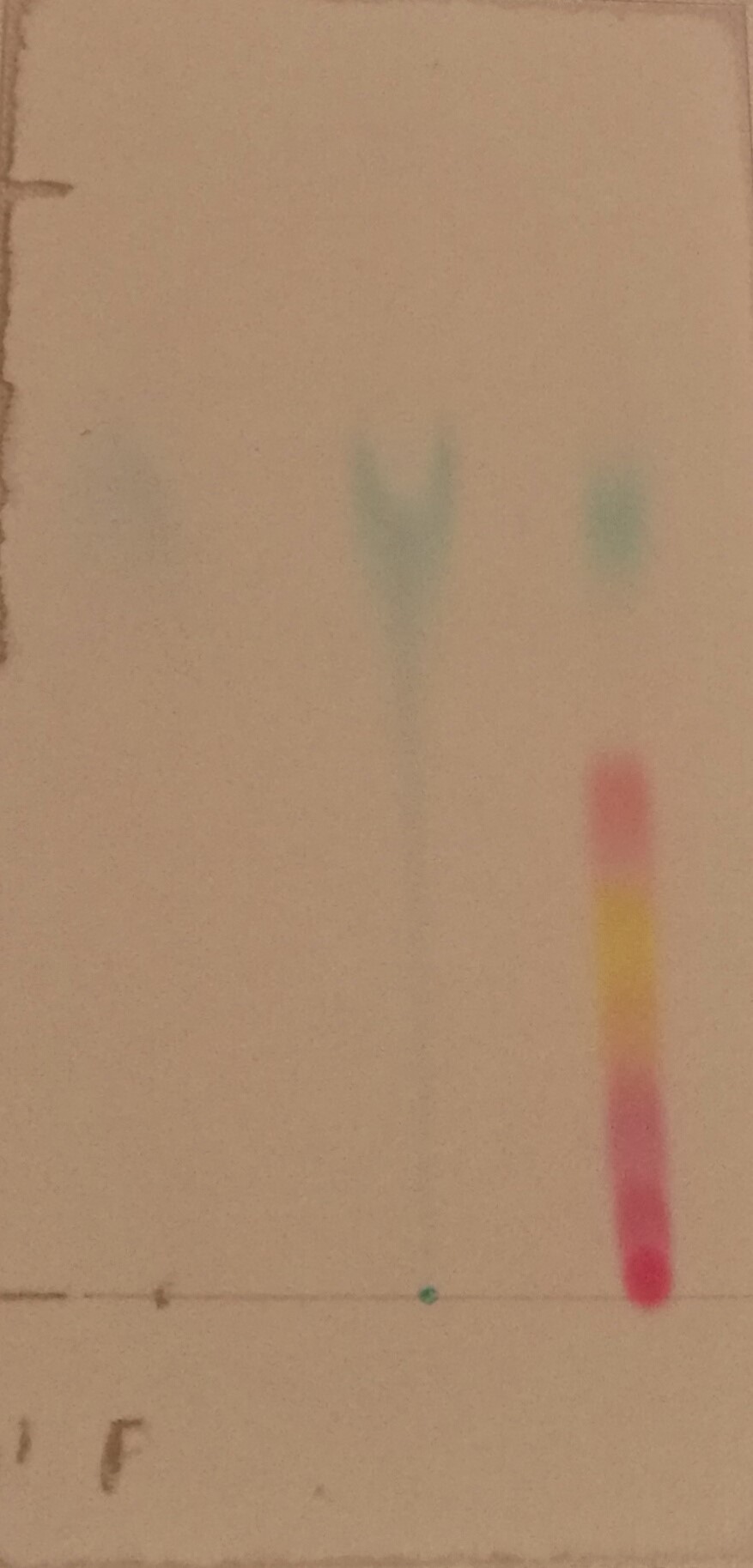Neben den Anatomie Praktika hatte ich an der Hochschule Weihenstephan-Triesdorf auch Praktika in Chemie. Am letzten Praktikumstag haben wir dort die Dünnschicht Chromatografie durchgeführt. Dieses Nachweisverfahren war für mich am interessantesten, da es sich dabei um einen Nachweis von Farbstoffen oder Konservierungsstoffen in Lebensmitteln handelt.
Für diesen Nachweis der Farbstoffe stellt man erst eine verdünnte Lösung der Probe her, indem man sie mit destilliertem Wasser verdünnt. Diese Lösung versetzt man dann mit Weinsäure, um einen sauren pH-Wert zu erreichen. Anschließend gibt man einen entfetteten Wollfaden hinzu und erwärmt die Lösung, dabei bindet der Farbstoff an den Faden. Um den Farbstoff von dort wieder zu lösen gibt den Wollfaden in ein separates Becherglas, fügt Ammoniak hinzu und kocht die Lösung auf. Im nächsten Schritt reduziert man die Farbstofflösung auf wenige Milliliter.
Die Probentrennung erfolgt dann durch die Dünnschicht Chromatografie. Dafür gibt man die Probe und das Testfarbstoffgemisch auf eine Chromatografie Platte. Nun stellt man diese in einen verschlossenen Behälter mit dem Fließmittel. Durch den Kapillareffekt fließt das Fließmittel nach oben und die Probe wird aufgetrennt. Anhand der Farbe und wie weit die Probe nach oben gelaufen ist, kann man dann erkennen um welchen Farbstoff es sich handelt. Beziehungsweise kann man zur Auswertung dann auch noch den Retentionsfaktor berechnen.
Den Verdacht auf einen Farbstoff kann man nochmals absichern, indem man die Probe und den Verdachtsfarbstoff auf eine Stelle auf einer weiteren Chromatografie Platte tropft. Hat man am Ende des durchgeführten Versuchs nur einen Punkt auf der Platte, hat sich der Verdacht bestätigt.
Auf dem Bild könnt ihr Sehen wie so eine Chromatografie Platte aussieht. Auf der linken Seite befindet sich die Probe und rechts das Testfarbstoffgemisch. Die Platte stammt vom Nachweis des blauen Farbstoffs E133 in einem Getränk.
Thin-layer Chromatography
I had a practical course in chemistry as well, besides the anatomy practical course at the university of Weihenstephan-Triesdorf. We did the thin-layer chromatography at the last day of this course. It’s a detection method for artificial colouring and preservatives in foods. That’s why this course was very interesting for me.
The first step was to dilute the sample with distilled water. After this we had to add acid to get a lower the pH level. We were heating the mixture with a degreased wool thread in it up now. During this process the colouring binds at the wool thread. To get the colouring off the thread again, you put it in a separate beaker and add ammoniac. Heating this mixture up again and reduce the fluid to a few millilitres are the next steps.
The sample gets separated through thin-layer chromatography now. For this you put a little bit of the sample and of a test colouring mix at a chromatography sheet. This sheet you give now in a box with a flow substance in it. The flow substance is rising through capillary action and separates in this way the sample. After this process is over the sample can be identified by its colour and the distance it moved at the sheet. Or the retention factor can be calculated.
The suspicion can be confirmed by doing another test. This time you put the sample and the colour, you think it is on the same point at the chromatography sheet. The suspicion was right if you have at the end of the chemical trial still one point.
You can see at the picture how a chromatography sheet looks like. At the left side is the sample and on the right the test colouring mix. The sheet is from the detection of the blue colouring E133 in a drink.

